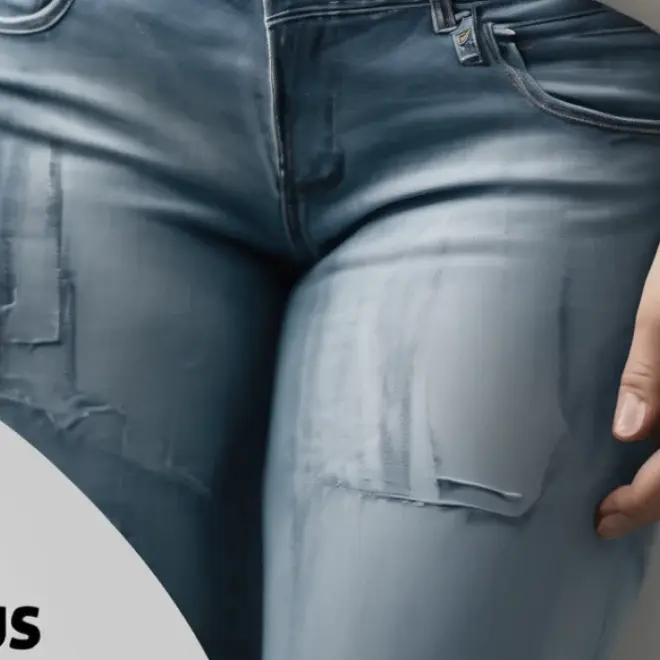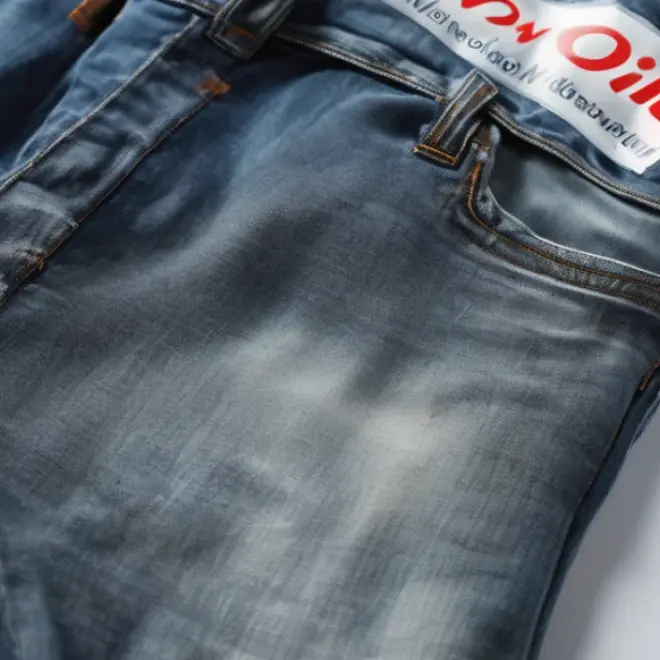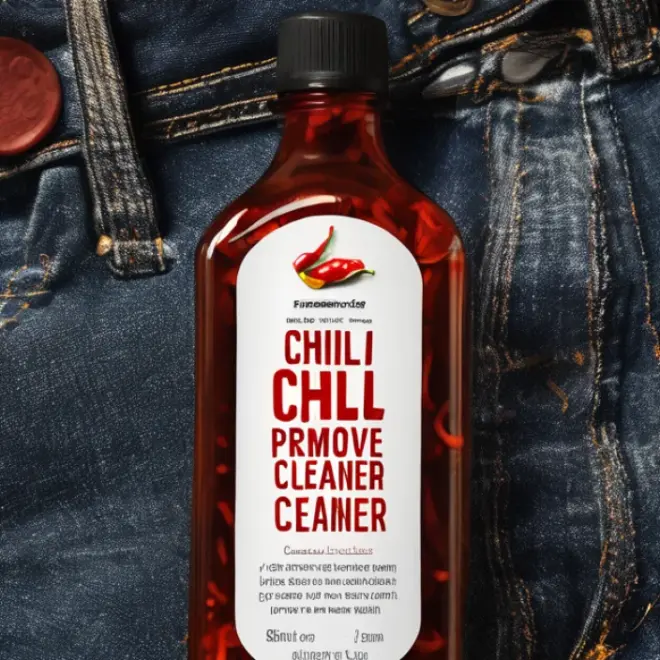Stain-free jeans are achievable! Act fast by blotting the spill, then gently washing with a pre-treatment of detergent or a DIY paste. For set-in stains, a stronger stain remover or a vinegar soak can help. Always check care labels and test treatments on an inconspicuous area first.
A splash of soy sauce on your favorite jeans can feel like a disaster. Whether it’s from a delicious meal or an accidental spill, that dark, sticky stain can be frustrating, especially on denim. But don’t worry! With the right approach, you can rescue your jeans and keep them looking their best. We’ll walk you through simple, effective methods to tackle soy sauce stains, turning a potential wardrobe crisis into a quick fix. Get ready to restore your jeans to their stain-free glory.
Soy sauce stains on jeans are common because soy sauce is a staple in many kitchens and a frequent accompaniment to various foods. Its dark color and sticky protein components can quickly bond with fabric fibers, especially absorbent ones like denim. The longer a soy sauce stain sits on your jeans, the harder it becomes to remove. This guide will equip you with proven strategies to lift these stains, whether they’re fresh or have been sitting for a while. We’ll cover everything from immediate actions to more stubborn stain removal techniques, ensuring you have the knowledge to save your denim.
Understanding Soy Sauce Stains on Denim
Soy sauce, a fermented condiment, is primarily made from soybeans, wheat, salt, and water. Its deep brown color comes from melanoidins, compounds formed during the Maillard reaction, which also contributes to the browning of foods. These melanoidins, along with the proteins and sugars in soy sauce, are what make it a notorious fabric stainer. Denim, with its characteristic weave and often lighter color, readily absorbs liquids, making it susceptible to these types of stains.
The key to successful soy sauce stain removal lies in understanding the stain itself and acting promptly. Fresh spills are generally easier to manage because the stain hasn’t had time to deeply penetrate and chemically bond with the fabric fibers. Once dried, the components of soy sauce can become more fixed, requiring more robust treatment methods. Denim’s durability is an advantage here, as it can typically withstand a bit more scrubbing and stronger cleaning agents compared to more delicate fabrics. However, it’s always wise to be gentle to avoid damaging the weave or color of your jeans.
Immediate Action: The First Line of Defense
When a soy sauce spill happens, your first instinct might be to rub it, but this is the worst thing you can do. Rubbing can spread the stain and push it deeper into the denim fibers. Instead, grab a clean, dry cloth or paper towel and gently blot the affected area. The goal here is to absorb as much of the excess liquid as possible without spreading it. Work from the outside of the stain inward to prevent it from getting larger.
- Blot, Don’t Rub: Use a clean cloth or paper towel to absorb excess soy sauce.
- Be Gentle: Avoid scrubbing, which can push the stain deeper.
- Work Inward: Start blotting from the edges of the stain towards the center.
If you have lukewarm water handy, you can also try dabbing the stain with a damp cloth after blotting. This can help dilute the soy sauce before it sets. However, avoid using hot water, as heat can sometimes set protein-based stains. For immediate relief, blotting is your most critical first step.
DIY Stain Removal Methods: Common Household Solutions
Before reaching for specialized stain removers, many common household items can be surprisingly effective against soy sauce stains. These methods are often gentle on fabric and are readily available, making them perfect for quick action.
Method 1: Liquid Laundry Detergent
Liquid laundry detergent is designed to lift stains and is a great first-line defense for fresh soy sauce spills. Its surfactants break down grease and other stubborn marks.
What You’ll Need:
- Liquid laundry detergent
- Clean cloth or soft brush
- Cool water
Steps:
- After blotting, apply a small amount of liquid laundry detergent directly to the stain.
- Gently work the detergent into the fabric using your fingers or a soft brush.
- Let it sit for 5-10 minutes to allow the detergent to break down the stain.
- Rinse the area with cool water.
- Check if the stain is gone. If not, repeat the process or try another method.
- Once the stain is no longer visible, wash the jeans as usual according to their care label.
Method 2: Baking Soda Paste
Baking soda is a mild abrasive and a natural deodorizer that can help lift stains from fabric. It’s particularly effective when made into a paste.
What You’ll Need:
- Baking soda
- Water
- Small bowl
- Clean cloth or soft brush
Steps:
- In a small bowl, mix baking soda with a little water to create a thick paste. Aim for a consistency similar to toothpaste.
- Apply the paste generously to the soy sauce stain, ensuring it completely covers the darkened area.
- Allow the paste to dry completely on the stain. This can take a few hours.
- Once dry, gently brush off the dried paste.
- Rinse the area with cool water and check for stain removal.
- Launder the jeans as you normally would.
Method 3: White Vinegar Soak
White vinegar is acidic and can help break down and lift the pigments from soy sauce stains. It’s also a great natural fabric softener and deodorizer.
What You’ll Need:
- White vinegar
- Cool water
- Basin or sink
- Clean cloth (optional)
Steps:
- Mix one part white vinegar with two parts cool water in a basin or sink.
- Submerge the stained part of the jeans in the vinegar and water solution.
- Let the jeans soak for about 30 minutes.
- Check the stain. If it’s lifting, gently rub the fabric together in the stained area.
- Rinse thoroughly with cool water.
- Launder the jeans as usual.
Tackling Set-In or Stubborn Soy Sauce Stains
Sometimes, soy sauce stains aren’t treated immediately, or they’re particularly stubborn. In these cases, you might need to employ slightly more potent methods. Always remember to test any new cleaning solution on an inconspicuous area of your jeans first (like an inside seam) to ensure it doesn’t damage the fabric or color.
Method 4: Oxygen-Based Cleaners
Oxygen bleach (non-chlorine bleach) is a color-safe alternative to chlorine bleach and is very effective at breaking down organic stains like soy sauce. Products like OxiClean fall into this category. You can find more information on how oxygen bleaches work on the U.S. Environmental Protection Agency’s resources on greener cleaning.
What You’ll Need:
- Oxygen-based cleaner (powder or liquid)
- Cool or warm water (check product instructions)
- Bucket or basin
- Clean cloth
Steps:
- Follow the instructions on your oxygen-based cleaner’s packaging for stain treatment. Typically, you’ll mix the cleaner with water in a bucket or basin to create a solution.
- Submerge the stained portion of your jeans in the solution.
- Let it soak for at least 1-2 hours, or even overnight for very stubborn stains, ensuring you follow the product’s maximum recommended soak time.
- Remove the jeans from the solution and rinse thoroughly with cool water.
- Wash the jeans as usual. Repeat the soaking process if the stain persists.
Method 5: Enzyme-Based Stain Removers
Enzyme-based stain removers are specifically designed to break down protein and organic stains. Soy sauce, with its soybean protein, is a prime candidate for these powerful cleaners. Many commercial laundry pre-treatment sprays contain enzymes.
What You’ll Need:
- Enzyme-based stain remover spray
- Clean cloth
Steps:
- Ensure the stained area of the jeans is slightly damp.
- Generously spray the enzyme-based stain remover directly onto the soy sauce stain.
- Gently rub the spray into the fabric with your fingers or a clean cloth.
- Allow the stain remover to work for at least 15-30 minutes, or as directed by the product’s instructions. For tougher stains, you might let it sit longer.
- Wash the jeans as usual in the washing machine.
Important Considerations for Denim Care
Caring for denim goes beyond just removing stains. Jeans, especially raw denim, have specific care needs that can affect their longevity and appearance. Always check the care label on your jeans before attempting any stain removal or washing process.
Check the Care Label
Every pair of jeans comes with a care label, usually found inside the waistband or a back pocket seam. This label provides crucial information about the recommended washing temperature, whether bleaching is allowed, and drying instructions. Ignoring these can lead to shrinkage, fading, or damage to the fabric.
A typical fabric care label might look like this:
| Washing Symbol | Meaning | Application to Jeans |
|---|---|---|
| Machine wash | Use a gentle cycle with cold water. | |
| Do not bleach | Avoid chlorine bleach; use oxygen bleach if necessary for stains. | |
| Tumble dry low | Low heat setting is best to minimize shrinkage. | |
| Iron at low temperature | Use a cool setting; avoid high heat, especially on embellished areas. |
Note: Image sources are conceptual. Actual symbols may vary.
Test in an Inconspicuous Area
Before applying any stain remover or cleaning solution to a visible part of your jeans, always test it on a hidden spot. This could be the inside hem, a small area on the inside of a leg, or the waistband lining. Apply a small amount of the cleaner, let it sit for a few minutes, and then rinse or blot it off. Check for any discoloration, fading, or damage to the fabric. This simple step can save your jeans from an irreversible cleaning mistake.
Washing Your Jeans After Stain Treatment
After you’ve successfully treated the soy sauce stain, it’s time to wash your jeans. For most denim, washing in cold water on a gentle cycle is best. This helps to preserve the color and prevent excessive shrinkage. Turn your jeans inside out before washing to protect the outer surface and any embellishments from abrasion.
Drying Your Jeans
Air drying is the gentlest method for your jeans. Hang them to dry, preferably in a well-ventilated area, away from direct sunlight which can cause fading. If you must use a dryer, opt for the lowest heat setting and remove them while they are still slightly damp to minimize shrinkage and creasing. Avoid high heat settings, as this can damage the denim fibers and cause them to shrink significantly.
Special Cases: Dry Denim and Colored Jeans
The care instructions and stain removal methods can vary slightly depending on the type of denim and its color.
Dry Denim (Unwashed or Raw Denim)
Dry denim, also known as raw denim, is untreated and unwashed. These jeans are often prized for their ability to develop a unique patina over time. Traditional advice for raw denim is to wash them as little as possible to preserve their original indigo dye and avoid creating harsh fades. For soy sauce stains on raw denim:
- Act Immediately: Blotting is paramount.
- Spot Treat Gently: Use a very mild detergent or a paste of water and baking soda on the stained area only.
- Rinse Carefully: Dampen a clean cloth with cool water and gently dab the treated area to rinse.
- Avoid Full Wash: Unless absolutely necessary, avoid washing the entire garment. If you must wash, do so in cold water on a gentle cycle and air dry.
The key is minimal intervention to preserve the denim’s character. Refer to reputable sources like Heddels’ Raw Denim Care Guide for more in-depth information on preserving your raw denim.
Colored or Coated Jeans
For jeans that are dyed dark colors, have a coating, or feature intricate patterns, extra caution is needed. The dyes or coatings can be more sensitive to cleaning agents than traditional indigo denim.
- Colorfastness Test: Always perform the inconspicuous area test for colorfastness.
- Mildest Solutions First: Start with the gentlest methods, like blotting and a diluted detergent.
- Avoid Bleaching: Never use chlorine bleach on colored or coated jeans. Oxygen bleach might be an option, but always test first.
- Vinegar Caution: While diluted vinegar is often safe, test it on a hidden spot as it may slightly alter some dyes.
If your jeans have a special coating (like wax or PU), consult the manufacturer’s cleaning recommendations, as harsh detergents or excessive water can remove the coating.
Troubleshooting Common Stain Removal Issues
Even with the best intentions, sometimes a stain can be more persistent than expected. Don’t get discouraged; troubleshooting can help.
What if the Stain is Still Visible After Washing?
If the soy sauce stain isn’t completely gone after the first wash, do not put the jeans in the dryer. Heat from the dryer can permanently set the stain. Instead, try one of the following:
- Repeat the most effective stain removal method you used before washing.
- Try a different method from this guide.
- Soak the jeans in an oxygen-based cleaner solution for a longer period (again, follow product guidelines).
- Take the jeans to a professional dry cleaner and point out the stain.
Patience is key. Sometimes, a stain requires multiple treatments. Remember to always let the jeans air dry between treatments and washes if the stain is still present.
Can I Use Bleach?
For traditional blue or black jeans, chlorine bleach is generally not recommended. It can create uneven lightening and damage the denim fibers. Oxygen-based cleaners are a safer alternative for most types of denim, as they are color-safe and gentler. Always check the care label – if it explicitly allows bleach, use it very sparingly and diluted, but it’s usually best to rely on other stain removal techniques.
What About Older, Dried-On Stains?
Older stains are tougher because the soy sauce has had more time to bond with the fabric. You’ll likely need a more intensive approach. Start with an enzyme-based stain remover or an oxygen-based cleaner soak. You might need to repeat the process several times. For very old, set-in stains, a gentle scrubbing with a soft brush after applying the chosen treatment can help break up the stain particles.
Frequently Asked Questions (FAQs)
Q1: How quickly do I need to treat a soy sauce stain on jeans?
A: The sooner, the better! Acting within minutes of the spill gives you the best chance of complete removal. Blotting immediately is key.
Q2: Can I use dish soap on soy sauce stains?
A: Yes, some mild dish soaps can be effective, especially on fresh stains. They are designed to cut grease and can help break down the soy sauce components. Apply a small amount, gently rub it in, let it sit for a few minutes, then rinse and wash as usual.
Q3: Will cold water work better than hot water?
A: Yes, cold water is generally preferred for treating protein-based stains like soy sauce. Hot water can sometimes set the stain, making it harder to remove.










